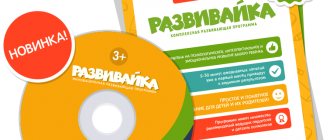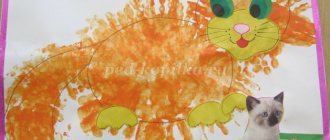If a child has been diagnosed with disabilities, after passing a special commission with the participation of psychologists, teachers, speech therapists, he is sent to the appropriate group. In the early stages of violations, it is possible to correct them, allowing you to eliminate disabilities forever. This article indicates the main aspects of these deviations in a child and how they are corrected. So, what kind of work is done with children with disabilities in preschool educational institutions, read in this article.
Children with disabilities and children with disabilities: what is the difference
Working with children with disabilities in preschool educational institutions. A child is considered disabled if he has not reached the age of majority and has persistent impairments of one or more body functions. According to the Family Code of the Russian Federation, a person with defects, pathologies or consequences of injury has a certain group of disabilities, due to which he is not able to perform all life processes without exception and has lost awareness of his own position in society.
The following are considered disabled:
- children who have lost the ability to move, who cannot control their behavior, do not have the opportunity to learn;
- completely or partially not performing self-service functions.
A medical certificate confirming disability is provided based on the conclusion of regional or city government health institutions.
Children with disabilities (CHD), unlike people with disabilities, have certain impairments in physical, as well as mental and emotional development. Such violations create obstacles for the patient to study educational programs and difficulty performing functions if appropriate conditions are not available. HIA is considered a simpler form of violation. Children with this diagnosis can perform viable activities, but they require special requirements.
Work program for children with disabilities (CHD)
Appendix to the adapted educational program for a preparatory group student Duration of the program: 2 months (November-December 2016)
Explanatory note
Preschool age is the most important stage in a child’s development.
The work program of the teacher with the pupil of the preparatory group is developed on the basis of the following documents:
- Federal Law of the Russian Federation “On Education in the Russian Federation” N 273-FZ (as amended by Federal Laws dated 05/07/2013 N 99-FZ, dated 07/23/2013 N 203-FZ);
- Regulatory and methodological documents of the Ministry of Education and Science of the Russian Federation and other regulatory legal acts in the field of education;
- Adapted basic educational program for preschool education. for children with disabilities (for children with intellectual disabilities) GBOU School No. 1391;
- Adapted educational program for children with disabilities (for children with intellectual disabilities) GBOU School No. 1391 DO No. 1;
- Charter of GBOU School No. 1391.
The work program was developed for a period of 2 months.
When developing the program, we took into account the individual developmental characteristics of a pupil of preparatory group D/O No. 1 with characteristics of mental retardation (hereinafter referred to as DSD). The teacher’s work program (hereinafter referred to as the EWP) for a pupil with mental retardation (hereinafter referred to as the DPR) is aimed at creating conditions for the comprehensive development of a child with special health conditions (hereinafter referred to as the OVD) in order to enrich his social experience and harmonious inclusion in a group of peers.
Goals and objectives of the program.
Target:
Increasing cognitive activity through various types of activities, developing skills of verbal interaction with peers and adults.
Tasks:
- formation of cognitive processes and speech activity through familiarity with the outside world;
— development of thought processes: memory, attention, thinking.
The deadline for the implementation of the work program is determined for the pupil by the protocol of the PPK of GBOU School No. 1391 No. dated 10.11. 2016.
The number of individual lessons of the teacher is determined by the PPC protocol 2 times a week for no more than 30 minutes. The content of the classes involves the integration of educational areas: cognitive development (the world around us); speech development; gaming activities (warm-up, didactic games).
Principles and approaches in organizing the educational process.
The educational process is built taking into account certain psychological and pedagogical principles:
1. The principle of integrity. The content of the educational process is aimed at creating a holistic view of the world in the student.
2. The principle of taking into account individual and age characteristics. The content of the program material, methods, techniques and forms of interaction correspond to the age of the child and his individual characteristics.
3. The principle of systematicity involves the presentation of material that is given in a certain sequence.
4. The principle of clarity. This principle is based on the developmental characteristics of preschool children. At preschool age, a child thinks more in images than in concepts. Visualization in learning is ensured by the use of a variety of illustrations, diagrams, and the use of vivid examples and life facts. A special place in the implementation of the principle of clarity has the use of visual aids, slides, maps, diagrams, etc.
5. The principle of integration. The educational process is built through the integration of speech, social-communicative, cognitive and productive activities of preschool children.
Methods and forms of interaction with the pupil:
- A visual method that ensures the brightness of sensory perception and motor sensations necessary for the pupil to develop the most complete and concrete idea of the world around him, activating the development of his sensory abilities.
— Verbal method , addressed to the student’s consciousness, helping to comprehend the task assigned to him and, in connection with this, conscious comprehension of the material, playing a large role in the assimilation of knowledge about the world around him, their independent application in various situations.
— A practical method associated with the practical activities of the student, ensuring the expansion of the child’s horizons through exercises and tasks. All this contributes to better mastery of knowledge, skills, and speech development.
— Game method , emotionally effective in working with a student, taking into account the elements of visual-figurative and visually effective thinking. In the process of play activities, the pupil develops moral and volitional qualities, develops cognitive powers, and gains experience in behavior and orientation in a group environment.
In individual, group and subgroup lessons, the following forms of work are used:
— didactic games;
- a story from an adult and a child;
- learning a poem;
- conversation.
Target guidelines for a pupil with mental retardation.
As a result of individual pedagogical influence, there should be:
- equal opportunities for the full development of the student;
— the potential capabilities of the pupil are revealed through the implementation of an individual and differentiated approach in the organization of all forms of educational activities and the formation of the level of readiness for school;
— continuity of the content of general education programs has been implemented
preschool and primary general education for children with mental retardation;
— provided psychological and pedagogical support for the family and increased competence of parents (legal representatives) in matters of cognitive development (the world around us), speech development, and gaming activities (warm-up, didactic games).
Planned results of mastering the program:
By the end of the program implementation period, the student must master:
- temporary ideas about winter (as the winter season);
- understanding the existence of three winter months (December, January, February);
- the ability to establish cause-and-effect relationships (what happened before and what will happen after in relation to a given plot);
- learn a poem about winter;
- the ability to reason and compose a coherent story about winter.
Activities:
- Working with the painting “Winter”.
- Didactic game.
- Learning a poem.
- Didactic game.
Approximate long-term thematic planning.
| № | Kind of activity | Target | Methodological support | Number of games | Form |
| 1. | Didactic game. | Expand and generalize the student’s understanding of the time of year (winter). | Lotto "Seasons" | 2 | Individual |
| Didactic game. | Learn to recognize the season “winter” by its characteristic features, develop memory | “When does this happen?” | 2 | Individual | |
| Didactic game. | Learn to recognize the winter months (December, January, February) by characteristic features, develop memory. | “Who are the neighbors?” | 2 | Individual | |
| Didactic game. | Learn to guess what happened before and what will happen after regarding a given plot | "Collect a chain" | 2 | Individual; | |
| Game - dramatization | Develop memory, attention, intelligence. | "Teremok" | 2 1 | Individual Subgroup. | |
| Speech development | Develop memory through memorization, attention, expressiveness. | "Winter" | 2 | Individual | |
| Examination of a painting on the theme “Winter”. Conversation, reasoning. | Learn to reason and compose a coherent story. Enrich your vocabulary of words. | Painting "Winter" | 3 | Individual. | |
| 3. | Total: | 16 |
How to work with children with disabilities in preschool educational institutions according to the Federal State Educational Standard: normative documents
Federal state educational standards for preschool education
Federal state educational standards for preschool education consist of a list of relevant tasks that require implementation. They were developed in accordance with the Constitution of the Russian Federation, legislation, taking into account the United Nations Convention on the Rights of Children. These tasks include:
- protect and strengthen the physical and mental health of the child, including his emotional well-being;
- provide equal opportunities for the development of any child in preschool, including children with disabilities. This requires favorable conditions where the child can develop according to his characteristics and while maintaining his own self-esteem;
- provide options and a variety of foundations and forms for preschool educational programs, with the possible formation of methods in various directions, taking into account the educational needs, abilities and health status of each child;
- provide families with support from psychologists and teachers, increase the knowledge and skills of close relatives on the issues of education, support, and treatment of the baby.
Federal state educational standards for preschool education have been developed taking into account the individual needs of all children, according to life situations, as well as their health. The Federal State Educational Standard determines the appropriate conditions for providing a child with education, special educational needs, and individual special requirements for certain categories of children and children with disabilities.
Adapted program for young children with disabilities
Order of the Ministry of Education and Science of the Russian Federation (Ministry of Education and Science of Russia) dated August 30, 2013 No. 1014 Moscow “On approval of the Procedure for organizing and implementing educational activities in basic general education programs - educational programs of preschool education”;
Order of the Ministry of Labor of Russia dated October 18, 2013 No. 544n “On approval of the professional standard “Teacher (pedagogical activity in the field of preschool, primary general, basic general, secondary general education) (educator, teacher).”
UN Convention on the Rights of the Child;
The main general education program of MAUDOO is kindergarten No. 9 of a combined type.
1.1.2. Principles of program formation.
-the principle of continuity: ensures the connection of the correctional work program with other sections of the basic general education program; - principle of complexity: corrective action covers the entire complex of psychophysical disorders; -the principle of gradually increasing the complexity of tasks and speech material, taking into account the “zone of proximal development”; - the principle of respecting the interests of the child: determines the position of a specialist who is called upon to solve the child’s problem with maximum benefit and in the interests of the child; -systematic principle: ensures the unity of diagnosis, correction and development, i.e. a systematic approach to the analysis of developmental features and correction of disorders in children with disabilities, as well as a comprehensive multi-level approach of specialists in various fields, interaction and coordination of their actions in solving the child’s problems; - the principle of continuity: guarantees the child and his parents (legal representatives) continuity of assistance until the problem is completely resolved or an approach to solving it is determined; -the principle of variability: involves the creation of variable conditions for receiving education by children with various disabilities in physical and mental development; -comprehensive thematic principle of constructing the educational process. the principle of continuity: ensures the connection of the correctional work program with other sections of the basic general education program; - principle of complexity: corrective action covers the entire complex of psychophysical disorders; -the principle of gradually increasing the complexity of tasks and speech material, taking into account the “zone of proximal development”; - the principle of respecting the interests of the child: determines the position of a specialist who is called upon to solve the child’s problem with maximum benefit and in the interests of the child; -systematic principle: ensures the unity of diagnosis, correction and development, i.e. a systematic approach to the analysis of developmental features and correction of disorders in children with disabilities, as well as a comprehensive multi-level approach of specialists in various fields, interaction and coordination of their actions in solving the child’s problems; - the principle of continuity: guarantees the child and his parents (legal representatives) continuity of assistance until the problem is completely resolved or an approach to solving it is determined; -the principle of variability: involves the creation of variable conditions for receiving education by children with various disabilities in physical and mental development; -comprehensive thematic principle of constructing the educational process. the principle of continuity: ensures the connection of the correctional work program with other sections of the basic general education program; - principle of complexity: corrective action covers the entire complex of psychophysical disorders; -the principle of gradually increasing the complexity of tasks and speech material, taking into account the “zone of proximal development”; - the principle of respecting the interests of the child: determines the position of a specialist who is called upon to solve the child’s problem with maximum benefit and in the interests of the child; -systematic principle: ensures the unity of diagnosis, correction and development, i.e. a systematic approach to the analysis of developmental features and correction of disorders in children with disabilities, as well as a comprehensive multi-level approach of specialists in various fields, interaction and coordination of their actions in solving the child’s problems; - the principle of continuity: guarantees the child and his parents (legal representatives) continuity of assistance until the problem is completely resolved or an approach to solving it is determined; -the principle of variability: involves the creation of variable conditions for receiving education by children with various disabilities in physical and mental development; -comprehensive thematic principle of constructing the educational process.
Organization of work with preschool children with disabilities in preschool educational institutions.
Adapted educational program of preschool educational institution
This program, according to the Federal State Educational Standard, implements the training and education of children with disabilities in accordance with their development, characteristics, and individual capabilities. In addition, she corrects, if necessary, problems with the child’s adaptation to social society.
Individual correctional and developmental route for a child with disabilities
General methods for preschool education are not suitable for all students. For some, it is quite difficult to study according to such a program, for others, on the contrary, there is not enough knowledge for further development. For this reason, new training systems are being developed that take into account all the individual qualities of all children individually. They are presented in the form of an individual educational route for children with health problems in a preschool educational institution.
It is developed by specialists, gradually setting goals and objectives, using pedagogical resources, methodological techniques and the results of individual educational methods.
Working with children with disabilities in preschool educational institutions
Work of a teacher with a child with disabilities
A teacher, when drawing up an individual lesson plan with a child, should be based on a conversation with him and his parents, a very detailed study of the child’s medical record, mental and physical examinations of the baby’s health. Further work of the teacher with a child with disabilities is carried out strictly according to an individual plan. The teacher must perform the following activities:
- conduct classes related to productive activities with each child separately or by uniting children in appropriate groups;
- develop finger motor skills;
- instill cultural and hygienic skills;
- organize individual lessons with children, taking into account the recommendations of speech therapists and psychologists;
- create a favorable atmosphere in the group;
- advise parents on the topic of creating knowledge on culture and hygiene, how it is necessary to develop children’s fine motor skills and their health characteristics.
Working as a nanny with a child with disabilities
A nanny in a preschool institution for children with health problems helps to dress and feed the baby, if necessary, communicate competently with him, and know how to provide first aid. Including, she should accompany the kids on walks, look after them during classes, and organize them proper rest.
Work of a teacher-psychologist with a child with disabilities
A teacher-psychologist in a preschool educational institution performs the following tasks:
- organizes interaction between teachers;
- works with children on psychoprophylactic and psychodiagnostic features;
- adjusts work with each child at risk;
- develops correctional programs for the individual development of the child;
- increases the level of psychological knowledge of teaching staff;
- advises the child's parents.
Work of a speech therapist with a child with disabilities
The speech therapist should:
- diagnose the level of expressive and impressive pronunciation of words and letters;
- develop individual training plans;
- conduct individual lessons;
- consult teaching staff, including parents.
Work of a physical education instructor with a child with disabilities
He conducts activities to improve the child’s health and improve the psychomotor skills of children.
Work of a music worker with a child with disabilities
Music worker:
- develops musical and aesthetic skills in children;
- selects material that allows conducting classes according to the physical, speech, and psychological abilities of children;
- uses music therapy tools.






